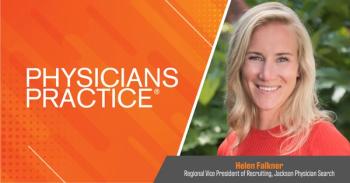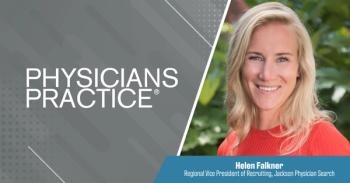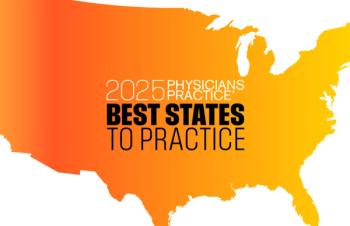
Navigating malpractice claims: A physician’s step-by-step guide
Physicians face malpractice claims throughout their careers. Learn proactive steps and the claims process to navigate these challenges confidently.
Malpractice lawsuits are an unfortunate reality of practicing medicine. Even the most skilled and conscientious physicians may find themselves the target of a claim at some point in their career — not necessarily due to negligence, but because of a poor outcome, a communication breakdown, or simply because they were involved in a patient’s care.
But when a claim arises, how you respond can make all the difference. In this article, we’ll walk you through key malpractice claim statistics, proactive steps to take after an adverse event, and what to expect throughout the claims process, so you can feel more confident and prepared should the unexpected occur.
Understanding the landscape: How often do physicians get sued?
According to the National Association of Insurance Commissioners, around 110,000
- By age 45, 36% of physicians in low-risk specialties (like primary care or allergy) will have faced a lawsuit
- In high-risk specialties (like OB/GYN or neurosurgery), that number jumps to 88%
- By age 65, over 99% of high-risk specialists will have been sued at least once
Despite the prevalence of claims, the outcomes may surprise you:
- 65% of claims are dropped, dismissed, or withdrawn
- 22% are settled before ever reaching trial
- Only 6% proceed to trial — and when they do, physicians win 90% of the time
- Still, the average cost to defend a claim is $50,000, and the average indemnity paid (when there is a payout) is $360,000
The takeaway? Most claims don’t end in trial or a payout, but the emotional, reputational, and financial strain can still be significant.
After an adverse event: What to do first
Not every poor outcome results in
Here’s what to do if something goes wrong:
- Report the incident to your practice administrator or risk manager immediately. They will notify your malpractice insurance carrier.
- Secure all relevant patient records, keeping them wholly intact. Don’t add notes, delete entries, or make corrections unless explicitly advised by your attorney.
- Do not create personal notes or narratives about the event unless requested and supervised by legal counsel.
- Avoid discussing the incident with anyone outside your insurer or assigned defense attorney — including colleagues, staff, or even the patient’s family.
Additional best practices include:
- Maintain open communication. Be accessible to the patient or their family, and respond with honesty and empathy. Proactive outreach and timely updates can go a long way in preserving trust and preventing misunderstandings from escalating into legal action.
- Avoid assigning blame. Whether it involves a colleague on your team or another provider in the community, avoid making comments that suggest someone else provided substandard care. Even subtle remarks can be misinterpreted and may fuel the patient’s desire to pursue legal action.
- Handle billing with sensitivity. In some cases, it may be appropriate to waive charges or pause collections related to the adverse event. A gesture of goodwill, particularly when paired with transparency and compassion, can help de-escalate frustration and reduce the likelihood of a formal claim.
Sometimes, early communication and compassion can diffuse a patient’s frustration and prevent a formal claim altogether.
The malpractice claim process: A step-by-step overview
If a claim is filed, the process can unfold over many months or even years. While your insurer and legal team will handle most of the heavy lifting, it’s important to understand how the process works and where key decisions are made.
1. Notice of claim
You’ll typically receive a letter or legal document notifying you that a claim has been filed. Contact your malpractice insurance company immediately. They will open a file, assign a claims representative, and engage a defense attorney on your behalf.
2. Initial assessment and reserve setting
Once your carrier and attorney have the facts, they’ll begin evaluating the case. This involves reviewing medical records, timelines, documentation, and potential liability. At this stage, the insurance company sets a “reserve” — an internal estimate of how much they believe the claim might ultimately cost to resolve. This reserve helps guide strategy decisions, such as whether to consider early settlement discussions or prepare for an aggressive defense. While reserves don’t directly affect you as the insured, they reflect the carrier’s expectations and shape how they approach the case going forward.
3. Investigation phase
Your attorney and insurer will continue gathering details, often with input from expert witnesses or consultants. You may be asked to provide clarifications, but your defense team handles the majority of case development.
4. Deposition
If the claim progresses, you’ll likely participate in a deposition — a formal, recorded statement under oath. Your defense counsel will prepare you thoroughly for this step and accompany you throughout the process.
5. Settlement negotiations
At this point, the insurer may begin exploring potential settlement options. But here’s a critical detail: if your policy includes a pure consent to settle clause, the insurance company cannot settle the case without your written permission. This provision gives you the power to protect your reputation and avoid having a claim settled against your will, which can have lasting consequences, including permanent reporting to the National Practitioner Data Bank (NPDB). If your policy does not include consent to settle, the carrier may resolve the claim without your input, particularly if they believe it’s in their financial best interest.
Knowing whether you have this protection, and working with a broker who prioritizes it, can make a significant difference in how your claim is managed.
6. Trial (if necessary)
If no resolution is reached through negotiation, the case may go to trial. Your legal team will represent you in court, and you’ll likely testify as part of the proceedings. While trial can feel intimidating, remember that doctors win at trial 90% of the time.
7. Resolution & reporting
Once the claim is closed, whether by dismissal, settlement, or trial, the outcome may be reported to the NPDB and state licensing boards. Your broker can help you understand how (or if) the claim will impact your long-term record.
Final thought: Don’t go it alone
Being named in a malpractice claim can feel deeply personal and understandably overwhelming. But you are not alone. Your malpractice insurer and defense team are there to guide you, protect your interests, and advocate on your behalf.
Understanding the process and knowing what to expect can help reduce anxiety and keep you focused on what matters most: your patients and your practice.
Jennifer Wiggins is the CEO and Founder of Aegis Malpractice Solutions, an independent malpractice insurance brokerage that helps physicians across the country find the best coverage for their unique practice needs. She also hosts the podcast “Malpractice Insights,” offering free education and real-world guidance for healthcare providers navigating malpractice insurance.
Newsletter
Optimize your practice with the Physicians Practice newsletter, offering management pearls, leadership tips, and business strategies tailored for practice administrators and physicians of any specialty.








